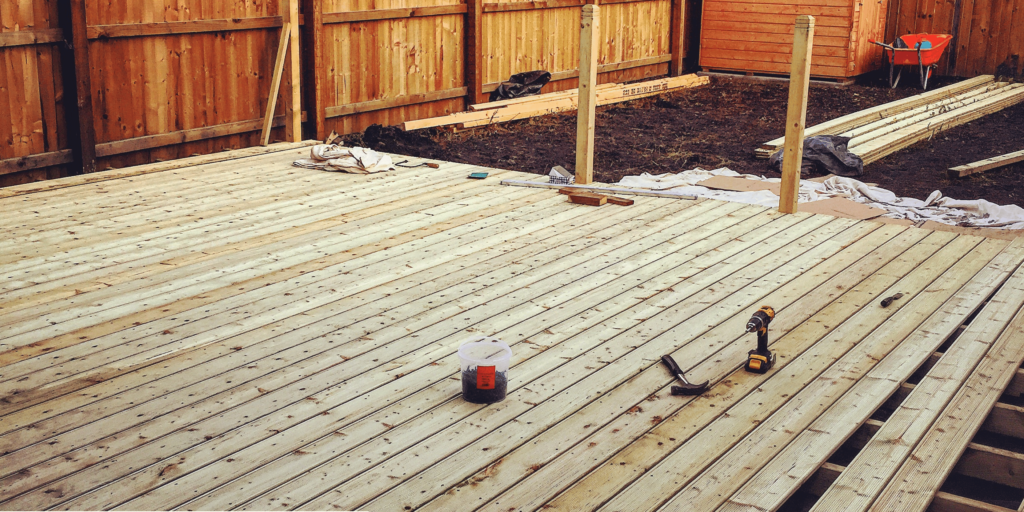Introduction
Composite decking is used in the construction of outdoor living areas because they are solid, requires little or no maintenance, and is efficiently designed to suit the homeowner’s preference. But still, these composite decks can crack, and consequently, they demand constant checks. It is, therefore, essential to get to the root of deck cracking to ensure it is avoided and, if it occurs, fixed accordingly.
Reasons for Cracking
There are several common reasons why cracks may start to form on your composite deck:
Improper Installation
Another leading cause of cracks on composite decks is the failure to install them correctly.
Some critical installation mistakes that can lead to cracking include:
– Incorrect pitch – This means that in some areas, the joists are spaced too far apart, which cannot support the deck’s weight. This results in some forms of bending and flexing that strain the structure and, consequently, cracking. Joists should be spaced at 16 inches in the center should be followed.

– Proper ventilation is not being done. Composite decking is an evolving product. Thus, it can expand and contract based on temperature change. There’s yet another reason why one should ensure that the area beneath the boards is well-aired; the boards will crack. At least 1-2 inches of gap area should be left between the top of the deck boards and the joists.
– No gap—Similarly, composite boards have a tendency to expand and contract in the length direction. This means a small space should be left between the boards, for example, ¼ inches, to accommodate this movement. Boards should be fitted closely but with some gaps to accommodate movement; otherwise, the boards will split.
Sun Exposure and Moisture
Sun and water are two of the most destructive forces on composite decking as an environment. Many of these decks have, within their composition, some form of plastic polymer. Exposure to UV light weakens these polymers and, as a result, becomes brittle; cracks and splits occur due to UV light exposure. If the moisture level is high below the deck boards or there is moisture on top, then you will see expansion, warping, and cracking over time. The final area of consideration is drainage and ventilation, which should be adequately taken care of.
Substructure Movement
If the substructure of the deck, which is the joist and beams, is to settle or move out of position over time, the top deck that is made of the board may develop stress cracks. The root cause can lie in a change of support or instability of some of the structural elements beneath the carpet. Some of the regular checks that are required include the frame and foundation checks. Some common indications that there could be issues with the support structures of the deck include several split deck boards.
Heavy Objects or Traffic
Moderate foot traffic is what composite decking is best suited for; it wouldn’t be ideal for installing in high-traffic areas such as patios or balconies. However, heavy and equally distributed loads throughout a space can cause the surface to flex and perhaps crack. Dragging planters, furniture, or any other heavy appliance on the decking can put pressure on the boards and cause some of them to crack. Cracking usually begins in areas of intensified traffic or where heavy items are regularly placed. One has to think about using rugs or furniture pads at the bottom or floor level to help spread the load.
Preventing Cracks
While composite decking is susceptible to cracking, there are some preventative measures you can take:
-It must be installed correctly. Heed all the requirements elaborated on regarding joist spaces, air circulation, board gaps, and fasteners.
– Use decking screws or hidden fasteners – these will let the boards move in and out freely while nails control this movement.
– Adding shade elements – If there is no shelter, an awning, umbrella, or some plants can be used to reduce exposure to the sun.
– It is also essential to enhance drainage and ventilation within the deck by locating it on a slight incline to enable water drainage and ensure there is enough space beneath the deck for air circulation.
– Check the structural parts of the house frequently. It is critical to observe if there are any signs that show that some parts of the house, especially the supporting ones, are weakening or have started sinking.

– Use felt pads under costly rugs or furniture pieces that are at risk of scratching other furniture items.
It might also be advisable to coat the deck with a sealer, which will prevent the boards from fading due to exposure to sunlight and moisture.
Repairing Cracks
If cracks do occur in your composite deck, they can often be repaired relatively quickly:
For minor surface cracks, use sandpaper to lightly scrub the affected surface and apply exterior wood filler to cover the crack. Let it dry thoroughly, then sand the area even and ready for another layer of finishing.
For cracks more comprehensive than ¼ inches, TAKE OUT individual boards that are affected. This may also involve removing adjacent boards and any other structures supporting the board where the cause was poor installation or support failure.
If severe cracking and damage extend to the entire slab, a total replacement of the concrete deck is sometimes required. I suggest contacting a professional inspector to assess the amount of work needed for the house repairs.
Being proactive and conducting the necessary repairs as soon as possible are keys to avoiding severe cracking in composite decking and maintaining its aesthetic value for a very long time. Take note of any emerging splits, and feel free to call a deck contractor if the need arises.